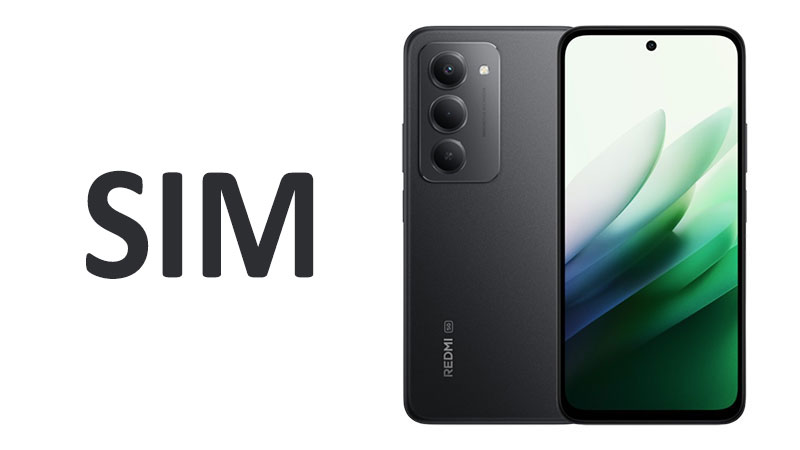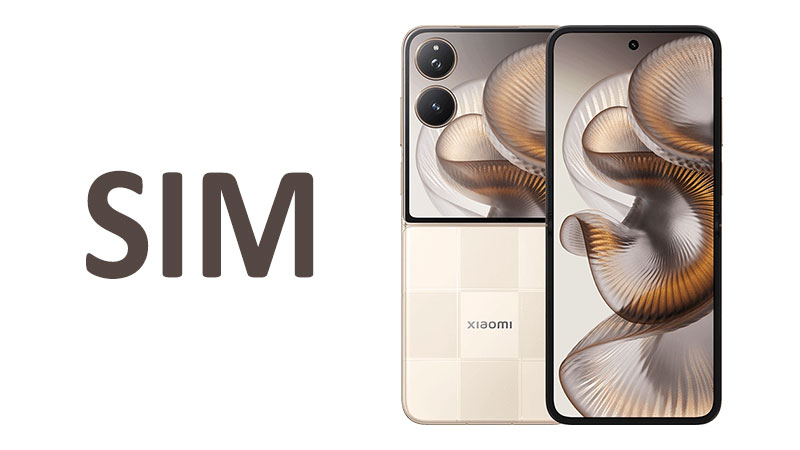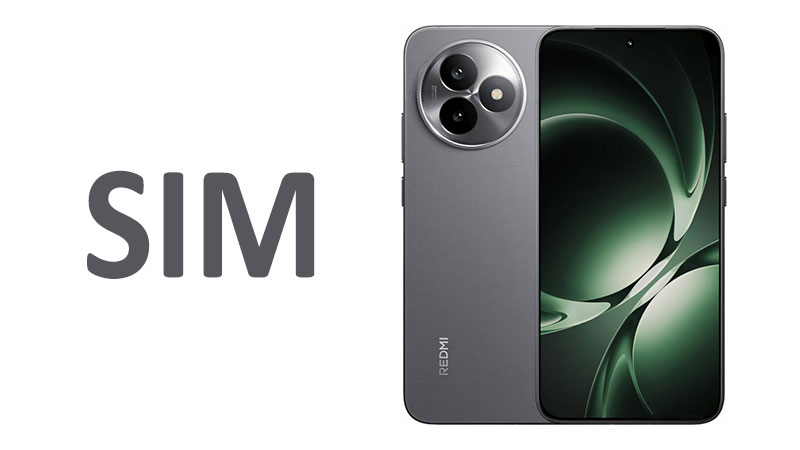The Xiaomi Redmi 15 SIM functionality defines its modern utility. This new device supports dual-SIM capability right from the start. Understanding its connectivity suite is essential for any potential buyer. We will explore every detail of the Xiaomi Redmi 15 connectivity. This includes its network speed, wireless protocols, and location services. This article serves as your comprehensive guide. It highlights key features and offers professional comparisons.
The Foundation: Dual Nano-SIM Technology
The Xiaomi Redmi 15 features a dual Nano-SIM configuration. This means users can insert two physical Nano-SIM cards simultaneously. This design offers immense flexibility for modern smartphone users. The setup is simple: Nano-SIM plus Nano-SIM. There is no need for a hybrid slot that compromises storage. This dedicated dual-SIM support is a significant advantage.
Specialized Comparison: Dual-SIM Versus Hybrid Slots
The dual Nano-SIM setup improves upon previous hybrid designs. Older Redmi models sometimes used a hybrid tray. This design forced users to choose. They had to select either a second SIM card or a microSD card for storage. The Xiaomi Redmi 15 removes this difficult choice. It offers both dedicated dual-SIM capability and potentially separate storage options. This makes the phone a more versatile tool. Many competitors still rely on the restrictive hybrid slots. Therefore, the Redmi 15 delivers superior flexibility here.
Pros and Cons of Dedicated Dual-SIM
Dedicated dual-SIM brings several important benefits. Firstly, it separates professional and personal life effectively. Users maintain two distinct numbers on one device. Secondly, it is perfect for international travel. Travelers can use a local SIM for cheap data and keep their home number active. This avoids expensive roaming charges. Thirdly, consumers can exploit different carrier plans. They might use one SIM for cheap calls and another for fast mobile data.
However, some minor drawbacks do exist. Managing two numbers requires a little more attention. Users must select the correct SIM for calling or texting. Battery life may also see a small reduction. The phone must constantly monitor two separate networks. These are minor trade-offs for enhanced functionality, however.
Important Points for the Buyer
Buyers must understand this is a dual standby feature. Both SIM cards remain active for receiving calls and messages. However, only one SIM can handle active calls or mobile data at a time. The phone manages this transition seamlessly in the background. Check your local carrier compatibility before purchasing. This ensures both your providers support this dual standby feature. This feature enhances the phone’s overall value proposition significantly.
Future-Proof Connectivity: 5G Network Support
The Xiaomi Redmi 15 connectivity package is thoroughly modern. It supports GSM, HSPA, LTE, and crucially, 5G technology. This broad support ensures connectivity worldwide across all generations. The inclusion of 5G is the most significant network feature. It future-proofs the device for years to come. This aligns with current “future-proof phone” searches.
The Leap to 5G Connectivity
The 5G capability provides lightning-fast mobile data speeds. Users experience faster downloads and much smoother streaming. Lower latency is another major benefit of 5G networks. This low latency drastically improves mobile gaming and video conferencing quality. Compared to standard 4G LTE, 5G is a transformative upgrade. It handles data-heavy tasks with unprecedented ease. This makes the device highly desirable for power users.
Specialized Comparison: 5G vs. LTE Speeds
LTE speeds typically peak around 150-300 Mbps in optimal conditions. The 5G network, however, delivers speeds measured in gigabits per second. This massive difference is immediately noticeable. Downloading a large file takes seconds, not minutes. While 5G coverage is still expanding, the phone is ready for it. Redmi has consistently offered strong 5G implementation. The Xiaomi Redmi 15 continues this trend with reliable performance. It focuses on maximizing the available network bandwidth.
Pros and Cons of 5G Ready Phones
The main advantage is access to next-generation internet speed. This speed significantly improves user productivity and entertainment. The phone will stay relevant as 5G adoption increases globally. It is a genuine “future-proof phone” due to this inclusion.
The primary disadvantage is potential battery drain. Using 5G consumes more power than standard LTE. This is common across all 5G-enabled devices today. Also, 5G service might not be universally available in all regions. Users in limited coverage areas may rely mainly on the slower LTE networks.
Important Points for the Buyer
Buyers must verify their specific carrier’s 5G bands. Not all 5G networks operate on the same frequencies. Ensure the Xiaomi Redmi 15 supports your local 5G spectrum. This confirms you can access the maximum possible “fast mobile data” speed. The phone supports a robust set of global bands. This ensures excellent connectivity across different geographical markets.
Comprehensive Wireless: Wi-Fi and Bluetooth
The local wireless connectivity features are also robust. The Xiaomi Redmi 15 manages network connections efficiently. Its Wi-Fi standard and Bluetooth protocol offer reliable performance. These are core components for daily communication and data transfer.
Wi-Fi 802.11 a/b/g/n/ac and Dual-Band Utility
The phone supports Wi-Fi 802.11 a/b/g/n/ac. This is commonly known as Wi-Fi 5. It offers reliable and fast “dual-band Wi-Fi” functionality. Dual-band means the phone can connect to both 2.4 GHz and 5 GHz Wi-Fi networks. The 2.4 GHz band provides better range, passing through walls easily. The 5 GHz band delivers much higher speeds over shorter distances. The combination offers the best of both worlds. Wi-Fi Direct is also included for easy device-to-device file sharing.
Specialized Comparison: Wi-Fi 5 vs. Wi-Fi 6
The Xiaomi Redmi 15 uses Wi-Fi 5 (802.11ac). This is a reliable standard but not the newest. Many flagship and upper mid-range phones now feature Wi-Fi 6 (802.11ax). Wi-Fi 6 offers even greater speeds and better efficiency. It particularly excels in crowded network environments. It handles multiple connected devices much better than Wi-Fi 5.
While Wi-Fi 5 is fast enough for most users, it is a slight compromise. Buyers seeking the absolute highest “fast wireless internet” speeds might note this. However, the existing Wi-Fi 5 implementation is proven and dependable. For everyday browsing and streaming, it performs exceptionally well. Redmi likely chose this to maintain a competitive price point.
Pros and Cons of Wi-Fi 5
The advantages of Wi-Fi 5 are clear: stability and widespread compatibility. Almost every modern router supports this standard effortlessly. It also uses slightly less power than constant Wi-Fi 6 operation. This contributes to a better daily battery experience.
The disadvantage is the peak speed limitation. It does not offer the same future capacity as Wi-Fi 6. Users with many smart home devices might notice congestion. Nonetheless, this is a strong foundation for “Redmi Wi-Fi performance.”
Bluetooth 5.1 and Audio Excellence
The phone features Bluetooth 5.1 technology. This version offers several improvements over older protocols. It provides faster speeds and a more stable connection. It is highly energy-efficient, minimizing battery drain.
Crucially, it supports A2DP, LE, and aptX. A2DP ensures high-quality stereo audio streaming to headphones. LE (Low Energy) allows efficient communication with smart accessories. The inclusion of aptX is excellent for audio enthusiasts. It delivers near CD-quality sound over Bluetooth. This is crucial for premium wireless headphone experiences. This combination ensures stable and high-fidelity audio transmission.
Global Positioning and Smart Device Control
Location services and specialized ports enhance the phone’s utility. The Xiaomi Redmi 15 includes a comprehensive suite of features here. These elements impact navigation, payments, and device interaction.
Multi-System Positioning for Precision
The device supports multiple global navigation satellite systems (GNSS). It utilizes GPS, GLONASS, GALILEO, and BDS. Using four systems concurrently guarantees maximum positioning accuracy. It minimizes the time needed to establish a location fix. This level of precision is vital for detailed maps and location-based applications. It ensures reliable navigation even in dense urban areas. This is a core feature for modern “precise location” services.
Specialized Comparison: GNSS Scope
Compared to older phones that relied solely on GPS, this is superior. GLONASS, GALILEO, and BDS are distinct systems. Integrating them strengthens the signal integrity significantly. This means fewer dropped locations and faster response times. The Redmi 15 offers a world-class positioning experience. This reliability is paramount for delivery drivers or hikers.
NFC for Secure Payments
The Xiaomi Redmi 15 includes NFC (Near Field Communication). This is a standard feature for modern convenience. NFC enables mobile payments via services like Google Pay. Users can tap their phone at payment terminals effortlessly. This ensures fast and “secure payments.” Note that NFC availability is “market/region dependent.” Buyers should confirm this feature in their specific market model. NFC also allows quick pairing with compatible accessories.
Infrared Port: Smart Home Control
A key signature feature of many Xiaomi phones is the infrared port. The Redmi 15 continues to include this convenient blaster. The infrared port transforms the phone into a universal remote control. Users can manage TVs, air conditioners, and set-top boxes. It is a simple yet powerful tool for “smart home control.” This feature often sets Redmi apart from many direct competitors. The functionality is highly valued by consumers worldwide.
Pros and Cons of Added Utility Features
The advantages are vast convenience and control. Multi-system positioning is a huge navigational benefit. NFC makes the wallet obsolete for quick transactions. The infrared port offers unique physical control over electronics.
The minor con is that NFC regional dependency can be frustrating. Users in certain markets may miss out on mobile payment options. Furthermore, the radio is absent from the feature set. This means users cannot listen to traditional FM radio broadcasts. However, streaming radio applications cover this need adequately.
Data Transfer and Charging: USB Type-C 2.0 and OTG
The physical connection point is crucial for charging and data. The Xiaomi Redmi 15 uses the universally accepted USB Type-C standard. This offers reversible plugging for ease of use. It represents a commitment to modern charging convenience.
The USB Type-C 2.0 Specification
The phone utilizes the USB Type-C 2.0 specification. While convenient, this is an important technical detail. USB 2.0 offers “data transfer speeds” up to 480 Mbps. This speed is perfectly fine for charging the device. It handles standard file transfers adequately.
Specialized Comparison: USB 2.0 vs. USB 3.x/3.1
The use of USB 2.0 is a clear cost-saving measure. Many mid-range competitors now feature USB 3.0 or even 3.1 speeds. USB 3.0 offers speeds up to 5 Gbps, which is ten times faster. This difference affects large file transfers significantly. Users frequently moving large video files will notice this limitation.
For everyday users who mostly charge and rarely transfer large data blocks, this is acceptable. Redmi focuses on delivering value with essential features. Buyers prioritizing the fastest possible “data transfer speeds” should note this specification.
OTG Functionality Deep Dive
The Redmi 15 includes OTG (On-The-Go) support. This is a highly useful addition. OTG allows the phone to act as a host device. You can connect various USB peripherals directly to the phone. These peripherals include external flash drives, keyboards, or even gaming controllers. OTG massively expands the phone’s functionality. It makes the device a much more versatile tool for productivity.
Pros and Cons of USB 2.0 and OTG
The main advantage is the widespread compatibility of USB-C. OTG support adds fantastic utility for users. The ability to plug in a flash drive is very convenient.
The key drawback is the slower USB 2.0 “data transfer speeds.” Moving hundreds of gigabytes of files takes a long time. This specification might affect professional videographers or photographers.
Important Points for the Buyer
Understand the speed limits of USB 2.0. If you frequently back up gigabytes of photos, expect a wait. The Type-C port itself ensures durable and reversible connections. This remains a major plus for everyday use. Focus on the excellent OTG support as a compensating factor.
Conclusion: Making an Informed Choice
The Xiaomi Redmi 15 connectivity suite is robust and well-balanced. It strategically combines high-end features with cost-effective compromises. Dedicated dual Nano-SIM support provides unmatched flexibility. Its essential 5G capability future-proofs your mobile network experience. The multi-system GPS offers top-tier navigation accuracy. Inclusion of NFC and an infrared port enhances daily utility greatly.
However, the phone uses the established Wi-Fi 5 standard. It also relies on the slower USB 2.0 specification. These compromises help keep the device affordable. Buyers prioritizing affordability and core performance will find this phone excellent. Those needing the absolute fastest Wi-Fi 6 or USB data speeds might look elsewhere. For the majority of users, the Redmi 15 delivers exceptional connectivity value. This phone is a compelling choice in the competitive mid-range market.
Frequently Asked Questions (FAQ)
- Does the Xiaomi Redmi 15 support two active 5G connections at once? The phone supports two Nano-SIM cards in dual standby mode. Only one SIM can actively use the 5G data connection at a time. Both SIMs remain connected to the network.
- Can I use a microSD card for extra storage on the Redmi 15? The dual Nano-SIM setup is dedicated. Check the phone’s full specifications for the inclusion of a separate microSD card slot. This model offers dedicated dual SIM.
- Is the infrared port useful for modern smart homes? Yes, the infrared port is highly useful. It controls traditional appliances like TVs and air conditioners. It acts as a universal remote control quickly.
- What is the benefit of Bluetooth 5.1 with aptX support? Bluetooth 5.1 provides faster and more stable connections. The aptX support ensures high-quality, near CD-level audio. This is perfect for music lovers.
- Does the Xiaomi Redmi 15 connectivity support eSIM? The provided specifications list Nano-SIM plus Nano-SIM support. The phone does not support an embedded eSIM based on these details. It only uses physical SIM cards.



